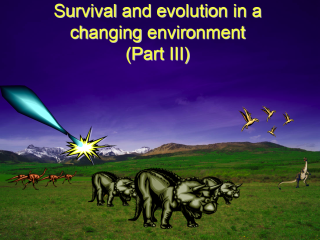There seems to be a new trend in computational biology: worrying about sequence alignments. Over the past couple of months, two high-profile papers have appeared that flaws related to sequence alignment methods.
The first paper appeared in Science Magazine in January this year. Wong and coworkers describe how uncertainties in multiple alignments can lead to errors in different phylogenetic trees:
Alignment Uncertainty and Genomic Analysis
The statistical methods applied to the analysis of genomic data do not account for uncertainty in the sequence alignment. Indeed, the alignment is treated as an observation, and all of the subsequent inferences depend on the alignment being correct. This may not have been too problematic for many phylogenetic studies, in which the gene is carefully chosen for, among other things, ease of alignment. However, in a comparative genomics study, the same statistical methods are applied repeatedly on thousands of genes, many of which will be difficult to align. Using genomic data from seven yeast species, we show that uncertainty in the alignment can lead to several problems, including different alignment methods resulting in different conclusions.
The second paper appeared in Nature Biotechnology. Styczynski and coworkers discovered that the most commonly used substitution matrix, BLOSUM62, was calculated wrongly:
BLOSUM62 miscalculations improve search performance
The BLOSUM family of substitution matrices, and particularly BLOSUM62, is the de facto standard in protein database searches and sequence alignments. In the course of analyzing the evolution of the Blocks database, we noticed errors in the software source code used to create the initial BLOSUM family of matrices (available online). The result of these errors is that the BLOSUM matrices — BLOSUM62, BLOSUM50, etc. — are quite different from the matrices that should have been calculated using the algorithm described by Henikoff and Henikoff. Obviously, minor errors in research, and particularly in software source code, are quite common. This case is noteworthy for three reasons: first, the BLOSUM matrices are ubiquitous in computational biology; second, these errors have gone unnoticed for 15 years; and third, the ‘incorrect’ matrices perform better than the ‘intended’ matrices.
Upon casual reading of these publications, one could get the idea that over a decade of work based on alignments, sequence similarity searches, and molecular evolution is wrong. Fortunately, this does not appear to be the case.
Starting with the second paper, I applaud the authors for discovering a mistake in such an established method, and I agree with them that it is remarkable that it has not been noticed before. However, I do not think that it is surprising that the ‘incorrect’ matrices work very well. Although they were not calculated as intended, the BLOSUM matrices have become the de facto standard precisely because they work as well as they do.
Regarding the first paper, I think it is fair to say that anyone working on multiple alignments and phylogeny are well aware that uncertain alignments can lead to wrong phylogenetic trees. This is why almost everyone uses programs like Gblocks to remove the ambiguous parts of their alignments before moving on to constructing phylogenetic trees. Unfortunately, Wong et al. instead constructed two sets of trees for each of the six multiple alignment methods: one based on the complete alignments, and one in which they excluded all gapped sites from the phylogenetic analysis. The latter is not equivalent to using a blocked alignment, since not all ambiguously aligned sites contain gaps, and since not all sites with gaps are ambiguously aligned.
Wong and coworkers subsequently compared the trees that they obtained using the six different alignment programs and found disagreements for almost half of all yeast proteins. This number may sound shockingly high, but I find it to be misleading in several ways. First, “disagreement” was defined as at least one of the six trees disagreeing with the others – much of the disagreement could thus be due to a single poorly performing alignment program. This definition also implies that the results can only get worse by adding more alignment methods to the comparison. Second, the comparison was not limited to the trees that are supported by bootstrap analysis – much of the disagreement is thus due to trees that we already know should not be trusted.
In my view, it would be more fair to make the comparison along the following lines:
- Align the sequences as done by Wong et al.
- Remove ambiguously aligned sites with Gblocks
- Construct phylogenetic trees based on the blocked alignments
- Calculate the bootstrap support for each tree
- Discard trees with poor bootstrap support
- Calculate the agreement on tree topology for each pair of alignment methods
This procedure will ensure that trees are not distorted by the unreliable parts of the alignments, that comparisons are not based on trees we know are unreliable, that the results are not skewed by a single poorly performing alignment method, and that the numbers remain comparable if more alignment methods are added. I have already downloaded all the alignments and run then through Gblocks; please let me know if you would like to continue the analysis from that step, and I will arrange a way to transfer the files.
Time might prove me wrong, but I expect that such an analysis will show that alignment uncertainty is not a major factor that needs to be taken into account when constructing phylogenetic trees.
 Cite this post
Cite this post










